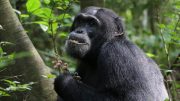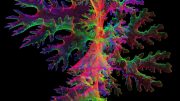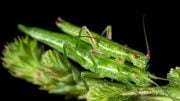PNNL scientists discover new soil viruses
The unsung hero of our lives is soil. It nourishes crops to give humans food, drains rainfall into aquifers, and serves as a habitat for a variety of organisms. On a microscopic level, soil is teeming with microorganisms such as fungi and bacteria that cooperate with plants. Despite being such a crucial aspect of our existence, little is known about what lies beneath the Earth’s surface.
Scientists from the Pacific Northwest National Laboratory (PNNL) employed bioinformatics and deep sequencing to detect soil viruses and better understand their roles in the Earth in new research. Most of these viruses infect bacteria and are consequently assumed to serve a key role in microbial population maintenance.
“Viruses are abundant in nature,” said Janet Jansson, chief scientist for biology and PNNL Laboratory Fellow. “Because there are so many of them in every soil sample, identifying different viruses becomes a challenge.”
Jansson worked with Computational Scientist Ruonan Wu and Earth Scientist and Microbiome Science Team Leader Kirsten Hofmockel in the Biological Sciences Division at PNNL to meet this challenge.
Along with collaborators from Washington State University; Oregon Heath & Science University; Iowa State University; and EMSL, the Environmental Molecular Sciences Laboratory, a Department of Energy Office of Science user facility at PNNL; the PNNL scientists collected soil samples from grasslands in Washington, Iowa, and Kansas and began a deep dive into the soil composition. They leveraged the massive DNA sequencing abilities of the Joint Genome Institute, computing power of the National Energy Research Scientific Computing Center, and multi-omics expertise from EMSL to unearth previously unknown soil viruses. Their results were published in mBio and Communications Biology.

From left to right: Janet Jansson, Ruonan Wu, and Kirsten Hofmockel pioneer research on soil viruses. Credit: Shannon Colson | Pacific Northwest National Laboratory
Different viruses for different climates
Because each site receives a varied amount of rainfall, the scientists picked Washington, Iowa, and Kansas for their soil samples. Eastern Washington is substantially drier than Iowa, whereas Kansas lies in the middle between the two in terms of soil moisture.
“We chose to take samples from places with different amounts of soil moisture to see if this made a difference in the types and amounts of viruses there,” said Wu. “Wetter soil contains more bacteria, and many soil viruses infect bacteria.”
The scientists noticed that certain viruses are much more abundant in dry soil than wet soil.
“In drier climates, there tend to be fewer, but more diverse, microbes in the soil,” said Wu. “The relative scarcity of bacterial hosts means that it’s in the virus’s best interest to keep the host alive.”
The researchers also discovered that in drier soil, viruses were more likely to contain special genes that they could potentially transfer to their bacterial hosts.
“These genes could potentially give their bacterial hosts ‘superpowers’” said Jansson. “These virus genes could be passed to their bacterial hosts to help them survive in dry soils.”
Though more research is necessary to better understand the role of these special viral genes, the possibility that they could be useful to bacteria living in the soil is exciting. These genes could be useful to bacteria by increasing their ability to recycle carbon and thus increase soil health.
This work was supported by the Department of Energy’s Office of Science Biological and Environmental Research program. This is a contribution of the scientific focus area “phenotypic response of the soil microbiome to environmental perturbations.” Portions of this research were performed by EMSL, the Joint Genome Institute, and the National Energy Research Scientific Computing Center at the Lawrence Berkeley National Laboratory.
References: “Moisture modulates soil reservoirs of active DNA and RNA viruses” by Ruonan Wu, Michelle R. Davison, Yuqian Gao, Carrie D. Nicora, Jason E. Mcdermott, Kristin E. Burnum-Johnson, Kirsten S. Hofmockel and Janet K. Jansson, 26 August 2021, Communications Biology.
DOI: 10.1038/s42003-021-02514-2
“DNA Viral Diversity, Abundance, and Functional Potential Vary across Grassland Soils with a Range of Historical Moisture Regimes” by Ruonan Wu, Michelle R. Davison, William C. Nelson, Emily B. Graham, Sarah J. Fansler, Yuliya Farris, Sheryl L. Bell, Iobani Godinez, Jason E. Mcdermott, Kirsten S. Hofmockel and Janet K. Jansson, 2 November 2021, mBio.
DOI: 10.1128/mBio.02595-21









… I just hope that it wont be studied till it can cause a danger to a humankind…